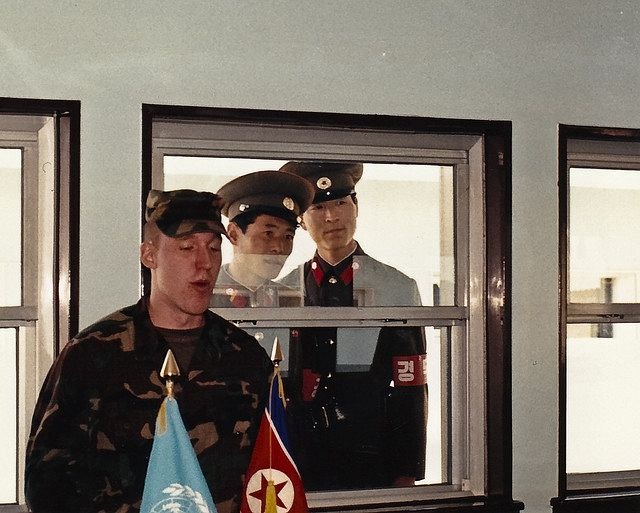Panmunjom, The Only Place Where Tourists Can Get Shot
Panmunjom is located in the most sensitive area of Korea's demilitarised zone. It’s the only tourist destination where visitors are required to sign a release that asks them to accept responsibility for “injury or death as a direct result of enemy action."
Panmunjom is a small village, about 55 km north of Seoul, that lies at the de facto border between North and South Korea. The truce that ended hostilities between the two countries was signed here in 1953, but as peace was never agreed to, the two sides are still officially at war over fifty years later and a million men stand guard around the Demilitarized Zone (DMZ). Despite its name, this 4-kilometer strip of land separating the Koreas is the most heavily armed region in the world: Pillboxes, land mines, barbed wire, and tank stoppers line the entire border and stretch back halfway to Seoul in the South and Pyongyang in the North.
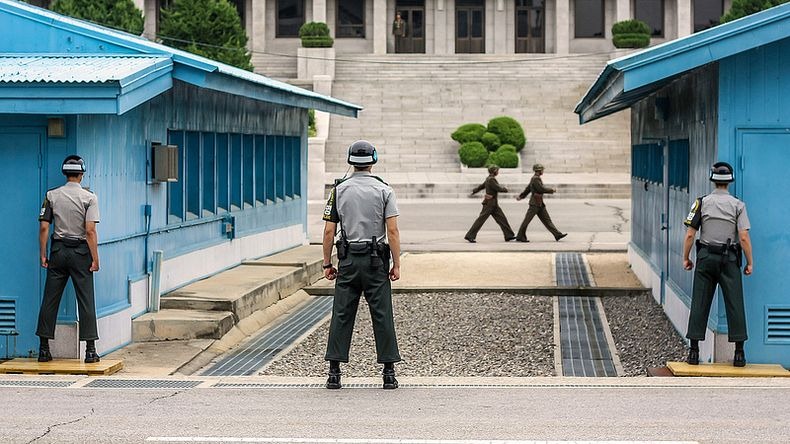
One kilometer east of the now deserted village is the Joint Security Area (JSA), an almost circular patch of land, is jointly policed by the South and North where the two sides occasionally meet for discussions, and gunshots. Most of the time the soldiers just glare at each other across the border. They have not been allowed to cross the demarcation line into each other's side since the so-called Axe Murder Incident in 1976 when two U.S. soldiers were hacked to death by axe-wielding North Korean soldiers as the Americans tried to trim a tree in the DMZ.
It's a dangerous place, but it's also a huge tourist draw. Every year thousands of tourists visit the village to see the Cold War’s last frontier. It’s like a bizarre theme park of cataclysmic mass death.
The 62-km journey towards Panmunjeom is a sight in itself. The 12-lane Freedom Road becomes eerily empty as you approach the border, as its primary purpose is to get tanks there as fast as possible if war breaks out. To repel an invasion, both sides of the highway, are covered with barbed wire and dotted with observation posts every few hundred meters. Nearby hills house machine gun emplacements, the median strip has clusters of sandbags for defence, and some bridges above the highway have huge concrete blocks that can be dynamited to block the road.
One of the main attractions in Panmunjom is a visit to the powder-blue, one-story building where officials from the two sides meet occasionally. A conference table covered with green velvet is placed directly over the border line, and the microphone cable that runs down the middle of the table is officially recognized as the international border. When tourists are ushered into the building, four soldiers from the U.S.-led U.N. Command, stand at either end of the building guarding the day-trippers while North Korean soldiers wander up to the windows and peer in through the glass. Tourists are warned not to make eye contact or gestures of any kind that might antagonize the North Korean guards, and follow a strict dress code. Blue jeans, shorts, or any other provocative clothes are not allowed.
“I'm not sure I'd recommend the DMZ as a holiday destination in itself”, wrote Kevin Sullivan in Washington Post, “but for anyone who plans to be in South Korea on business or vacation anyway, this place is not to be missed -- it's one of the weirdest and most fascinating places you can reach in a tour bus.”
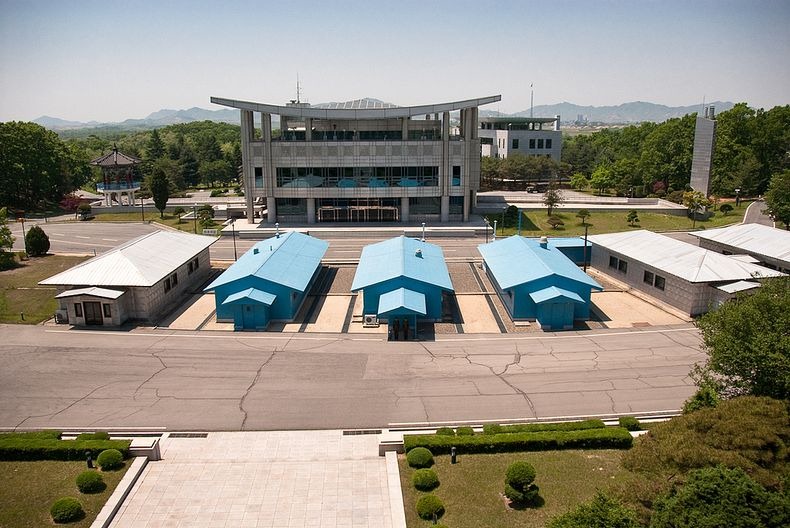
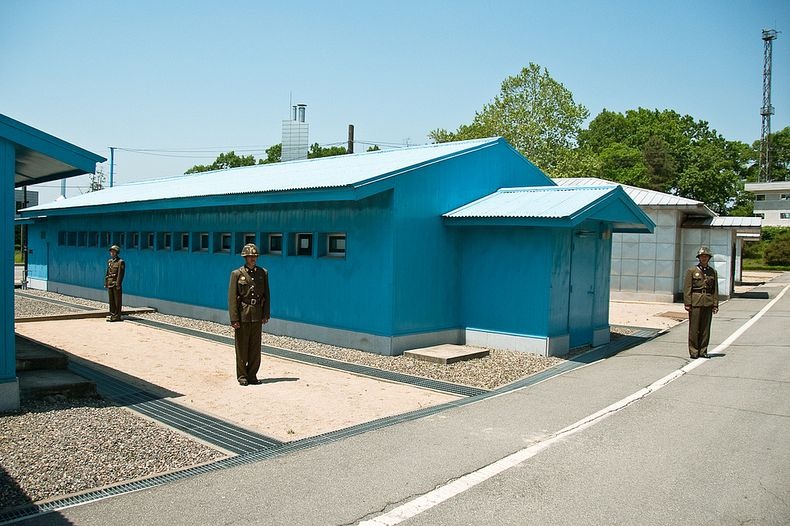
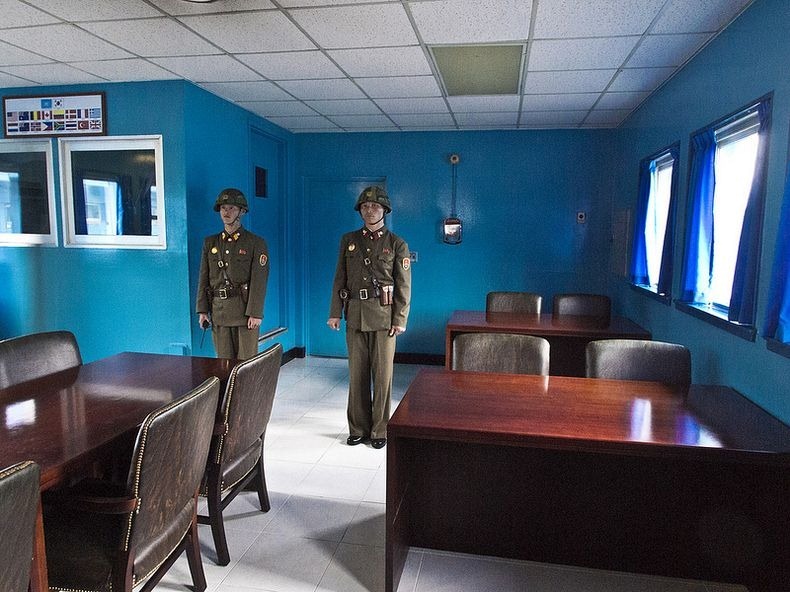
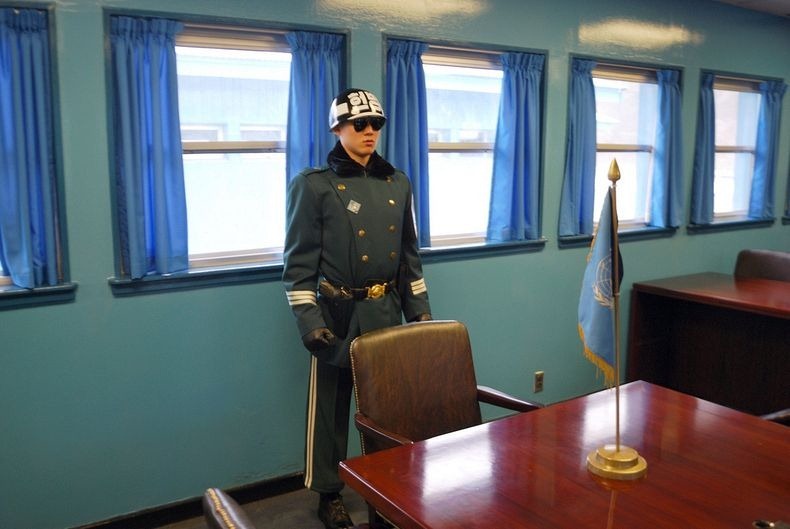
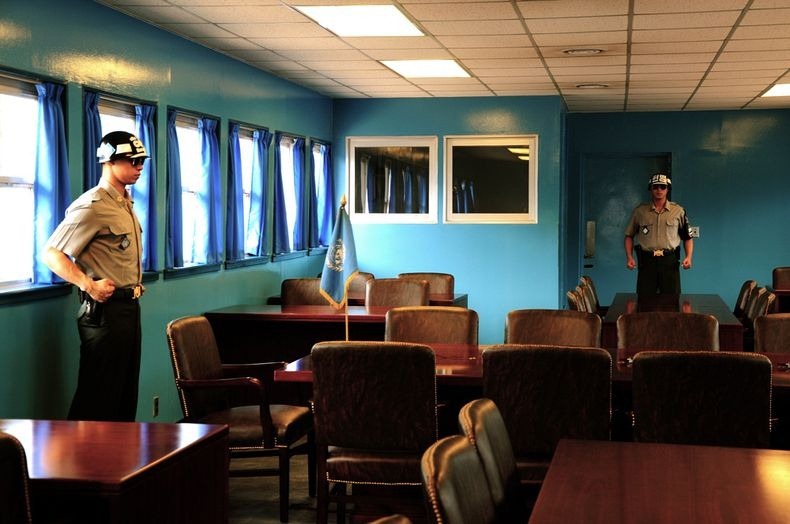
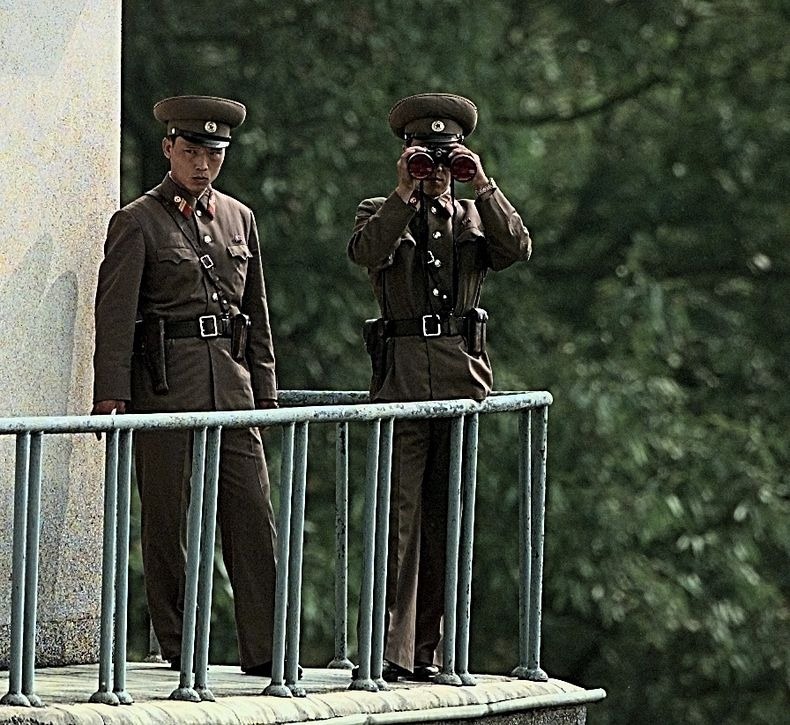
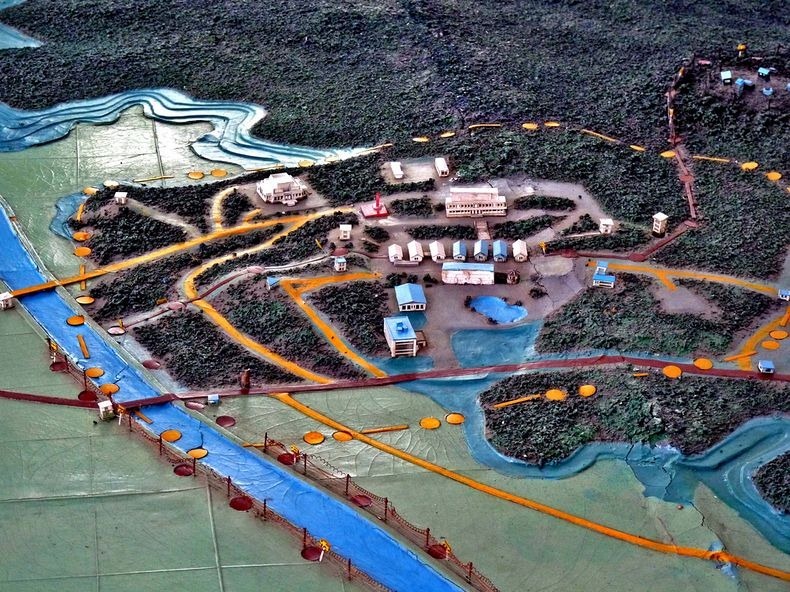
Model of Panmunjom. Photo credit
